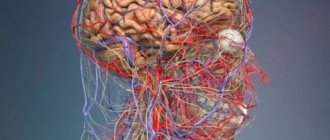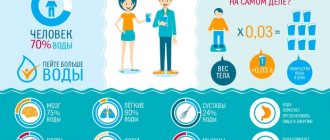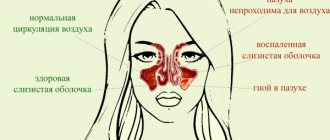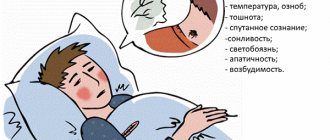Many of us often do not pay attention to the first symptoms of a cold or a common runny nose. But, if you do not start treating their symptoms in time, various complications may arise, including frontal sinusitis, sinusitis or inflammation of the maxillary sinuses. In this case, the patient is concerned about impaired nasal breathing and headache due to sinusitis. Why do pain occur and how to get rid of it?
A little about sinusitis
During a simple runny nose, the vascular system in the nasopharynx expands, the mucous membranes swell very much and inflammatory processes occur. Mucus begins to be produced more actively. If its outflow is not ensured in a timely manner, the sinuses near the nose become clogged.
Mucus accumulates, blocks the nasal passages, and bacteria multiply in these accumulations. Purulent deposits appear, which are the provocateurs of pain. Knowing what kind of illness this is, let’s try to answer the question of why a headache hurts and how to get rid of this feeling.
Different types of sinusitis
Sinusitis can be divided into three types, differing in symptoms.
The acute form develops in less than a month. Pathology is usually caused by viruses, fungal bacterial infections, and irritating external environment. The outflow of mucus is blocked, pus is formed, and the head hurts.
The chronic form develops over 3-4 months. The cause is improperly selected treatment for runny nose and colds, frequently recurring acute sinusitis, allergic rhinitis, immune disorders, abnormal structures of the nose, polyps. Headache with sinusitis of this form has an increasing character.
The recurrent form is diagnosed when the acute course of the disease recurs more than four times a year. Headaches with this type of pathology are almost endless.
Symptoms and types of sinusitis
The symptoms of the disease are quite striking, but they appear only during the acute stage of the disease; the chronic course of the disease can be asymptomatic. Among the main symptoms are:
- Temperature increase.
- Nose is stuffed.
- Compressive sensations in the bridge of the nose.
- Sometimes vomiting occurs.
- Very severe pain in the head, which becomes unbearable and begins to intensify when tilting the head.
- There are two types of sinusitis, if we classify it according to its course: chronic and acute.
An acute type of sinusitis appears after you have a severe runny nose. Symptoms of this type:
- Increased body temperature.
- Feeling of weakness, trembling in the body.
- Tears flow, it hurts to look at the bright light.
- The patient does not smell.
- Mucus is accompanied by pus.
- The face swells.
- Dizziness with sinusitis
In this situation, the headache due to sinusitis becomes incredibly severe, and unbearable when moving. There is a desire to get rid of the headache as soon as possible, using any possible methods. The acute period lasts about fourteen days.
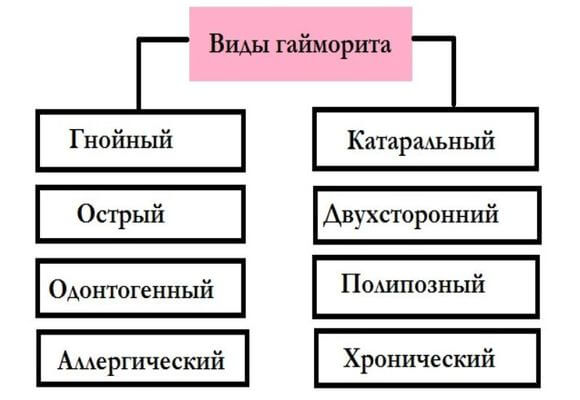
The chronic type is the transformation of an untreated acute type of disease. Some symptoms in adults at this stage are clearly expressed, others are blurred:
- Headache.
- The nose is blocked, it is impossible to breathe.
- Frequent runny nose that lasts a long time.
- Pain that can spread to the teeth and eyes.
The headache is pulsating in nature. It almost never stops, which leads to the patient being unable to sleep, quickly getting tired and irritated.
The source of pain is located in the front of the head. The disease is divided into several stages of its development. Each stage has its own characteristics:
- At the initial stage, patients complain of mild discomfort, which manifests itself in the morning. The pain is aching in nature and stops after several hours of wakefulness.
- At the second stage, the pain increases and spreads throughout the face.
- The third stage is characterized by frequent or continuous severe pain.
During your visit to the ENT office, you will not only be visually examined and interviewed, but will also be given directions for additional diagnostic examinations.
You will have to have a complete blood test and may need an x-ray. Only after such diagnostic methods will the doctor be able to give the right decision on the treatment of the disease.
Difference between headaches due to sinusitis and migraines
The headache attacks that are characteristic of migraine and sinusitis are very similar, which often complicates diagnosis. Sometimes it happens that a patient undergoes treatment for sinusitis, but the discomfort only intensifies.
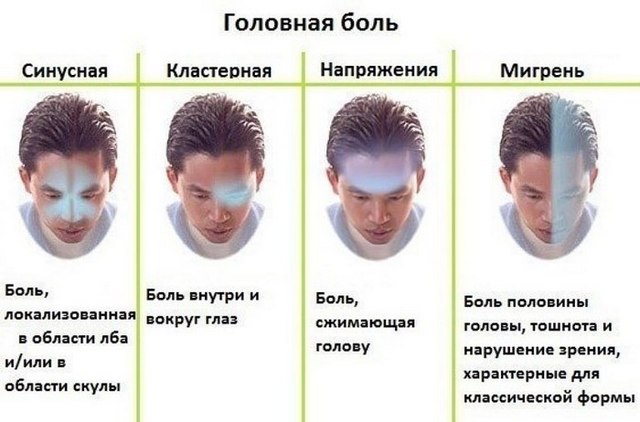
Common features of the diseases:
- Photophobia occurs.
- Nasal breathing is difficult.
- The headache is bursting in nature. Moreover, during a migraine it spreads to the temple and orbital area. At the same time, with sinusitis, pain is concentrated in the area of the sinuses and forehead.
Migraine attacks are characterized by a feeling of thirst. In this case, the patient drinks a lot of water, which causes swelling of the face, which is often mistaken for swelling from sinusitis.
Read more about migraine symptoms.
During a migraine, the pain is more one-sided, although pain from sinusitis can be on one side if a specific sinus is inflamed.
Pain at different stages
At the beginning of the development of sinusitis, sensations may be unconscious and blurred. Pain is rare, mild, and indistinct. The uncomfortable moments pass after a couple of hours. But over time, the sinuses fill with pus and the patient begins to suffer from painful discomfort throughout the entire time.
When the patient tilts his head or rotates it, the headaches with sinusitis become completely different: short spasms are formed that form near the bridge of the nose and move further into the head. If you feel your face, it will be very sensitive.
In the extreme stages of the disease, headaches occur almost non-stop. The pain is especially severe on the face.
You should not get carried away with drugs that reduce pain; they have a short effect and can be addictive. In addition, they do not fight the disease, but only dull the sensations from it.
Types of complications and harm of self-medication
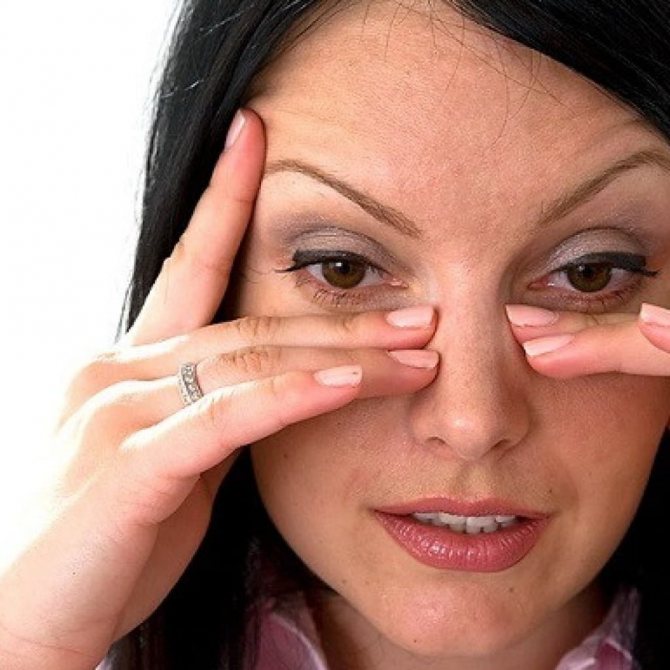
If you have sinusitis, visiting a doctor is considered mandatory; this will help avoid serious complications:
- meningitis;
- tooth loss;
- osteoperiostitis (inflammation of bone tissue).
Self-administration of drugs is also fraught with harmful consequences. Allergic reactions may occur, side effects and toxic lesions may appear. Why self-medication is dangerous:
- Taking the wrong medications can lead to a complete loss of smell;
- long-term use of vasoconstrictor drugs provokes medicinal rhinitis;
- change in the structure of the mucosa
Nature of pain
Let's figure out how a headache with sinusitis hurts, how does such pain differ from a regular migraine? There are a number of specific symptoms that will help you distinguish this special phenomenon:
- Pain appears in the morning in the back of the head. This is due to the fact that at night, when you are resting, mucus begins to accumulate and does not drain out. She begins to press and a painful sensation appears.
- The patient reacts very painfully to any touch to his face, forehead and nose.
- The pain becomes much more intense when turning and bending.
- A person can react to changing weather.
- Symptoms appear during a cold or after its treatment.
The disease most often occurs in patients who are prone to allergies, asthmatics and carriers of nasal polyps. Depending on where it hurts during sinusitis and where the source of the disease is located, the degree and type of the disease is determined.

Diagnostics
Quite often, when making a primary diagnosis, even experienced doctors can make mistakes, especially when it comes to a symptom of sinusitis such as headache. The fact is that the symptoms of sinusitis, classic migraine and vasomotor rhinitis are very similar.
At the initial stage, sinusitis in the absence of severe nasal congestion can be similar in pain to migraine, since their localization is the same, and is located in the structure of the same venous system. In turn, vasomotor rhinitis is also accompanied by headache and sinus congestion. How to distinguish these states? Firstly, this is an x-ray that will accurately show whether you have sinusitis or not. Also, with vasomotor rhinitis and migraines, pain is concentrated in the occipital region, temples and crown area, while with sinusitis the facial part and base of the nose hurt. The last argument that will convince the ENT specialist of the correct diagnosis is a comprehensive diagnosis, which, in addition to X-ray examination, also includes analysis of smears from the mucous membrane, blood tests, etc.
Do not forget that a similar headache can occur with polysinusitis.
Treatment
How to relieve a headache with sinusitis? The main stage from which treatment of any type of sinusitis begins is the elimination of inflammation in the sinus area. After the swelling is removed and all bacteria and microbes are eliminated, the sinusitis headache disappears.
If you have a severe headache during sinusitis, the doctor prescribes taking medications that eliminate the cause of its occurrence:
- It is not often possible to cure a disease without antibiotics. Medicines may be prescribed in the form of tablets and drops.
- Prescription of antiallergic drugs. They relieve swelling. Drugs that constrict blood vessels. These medications relieve pain caused by nasal congestion.
- Medicines for sinusitis that increase the body's protective function.
- Medicines that make mucus thinner. With their help we get rid of it.
Many medications aimed at treating sinusitis contain components that relieve pain.
But if after using such medications the pain does not stop, then the specialist may prescribe corticosteroids - medications whose action is aimed at eliminating inflammatory processes in the mucous membrane.
A cuckoo wash technique may be prescribed. This procedure has an effect after the first use. In difficult situations, you have to resort to puncture.
Home treatment
If you cannot get to a specialist, you can start treatment at home. There are a number of techniques that dull symptoms and eliminate pain. However, it is worth remembering that these methods of therapy are not an alternative to professional treatment, but only serve as auxiliary measures.
Here is a list of tips that will help improve the microflora of the mucous membranes in the nasal sinuses and help you understand how to treat sinusitis and dizziness at home:
- The nose can be washed with a solution of Dead Sea salt or herbal decoctions. These can be various plants: chamomile, sage, mint. In order to perform the procedure correctly, purchase a large syringe. There is no need to use a needle. Repeat washing at least three times a day.
- You can drip oil into your nose. This helps prevent dryness and swelling of the mucous membranes. This technique is used using olive or corn oil, or you can use a mixture of them. Sometimes the oil is infused with herbs, and heated before instillation. It is best to combine the two methods and drip the oil into your nose after rinsing it.
- After you have completed all the procedures, you can apply an ointment with a warming effect to the affected sinus area. To make this remedy, mix a little Zvezdochka balm with warm oil.
The duration of home therapy is at least ten days, it is necessary to drip oil for fourteen days - this will help avoid relapse. These techniques can improve blood flow in the nasal area, eliminate all mucus and pus, relieve swelling and eliminate headaches.

Causes of sinusitis
When infection enters the cavity, the respiratory system is disrupted. This condition can be caused by allergies, adenoids, rhinitis of any form, or deformation of the nasal septum.
Weakening of the immune system after illness is a provoking cause of the development of sinusitis.
An important role is played by the intrauterine formation of the maxillary sinuses themselves in the fetus, which begins in the fourth month of development. Initially, air cells form inside the ethmoid bones, then the maxillary ducts. During the asynchronous formation of the paranasal sinuses, the frontal and sphenoid cavities develop. Cavity formation is completed by 18-23 years; in some cases, the completion of the natural structure lasts up to 37-39 years. This explains the absence of inflammatory processes in the frontal sinuses in young children, due to their absence.
The development process is individual, therefore, at the end of formation, the structure of the sinuses differs in different people. Differences are noted in quantity, size, partitions, sometimes absence, which is not considered a deviation. Despite all the individuality, the paranasal canals connect to the nasal cavity. The maxillary and wedge-shaped ones are connected by a narrow passage located above the bottom. The frontal canals are narrow ducts inside the bones. This explains the pain of sinusitis. During swelling of the nasal mucosa, the ducts closed by a runny nose become the cause of inflammation. In childhood, the ductal communication is wider, the anastomosis is larger.
Headaches due to sinusitis, sinusitis and other pathologies can be caused by an abnormally grown structure inside the nose. When a growth forms on the middle or lower part of the turbinate, an obstruction is created. Deviated nasal septums also cause mucus retention.
Sinusitis occurs due to concomitant risk factors for infectious diseases of the respiratory system and more. Prerequisites that provoke the disease:
- allergic reactions;
- soft tissue injuries;
- fungus, neoplasms, tuberculosis;
- dry air (being in a room with hot air);
- weakened immune system;
- penetration of bacteria into the nasopharynx;
- injury to the nasal septum;
- hypothermia;
- aggressive environment affecting the mucous membrane;
- advanced form of a cold;
- improper functioning of secretory organs;
- complications after ARVI and other viral infections;
- draft;
- penetration of toxins into the respiratory system;
- negligent attitude towards oral hygiene;
Why does pain appear after recovery?
- The disease has not been cured. This usually occurs when getting rid of sinusitis on your own. Sinusitis goes into remission, the main signs of the disease disappear. Time passes, the outbreak enters an active stage, and the disease returns.
- The appearance of complications. First, in the acute stage of sinusitis, they cannot always be diagnosed immediately. Second, the immune system is weakened, and any infectious disease can easily “attack” a person.
- Low pain threshold. In case of punctures, a wide range of neurological disorders can occur.
- Sometimes the nerve endings are damaged.
Consequences
If you do not start treatment, or start it late, there may be unpleasant consequences:
- severe headaches are accompanied by discharge with an unpleasant odor, speech changes;
- the disease can progress to a chronic stage. A headache will accompany a person constantly;
- intracranial complications (edema, abscess, meningitis);
- pathological processes may occur (the appearance of cysts, adhesive distortions, immune changes);
- damage to teeth, eye sockets, nerve endings.


